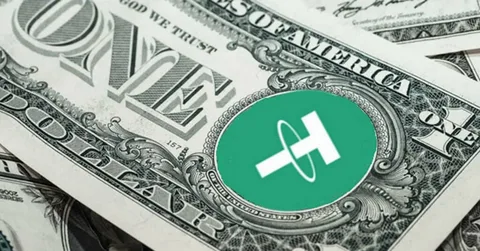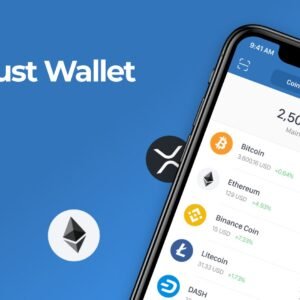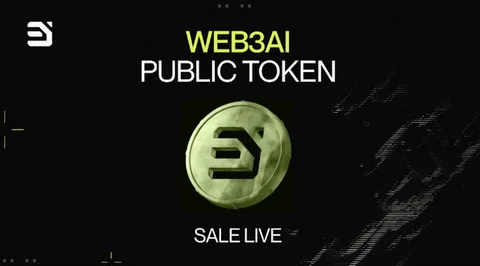Introduction
With the rapid growth of cryptocurrency adoption, stablecoins like Tether (USDT) have become crucial for trading and maintaining liquidity in the volatile crypto market. USDT, the first and most widely used stablecoin, is pegged to the U.S. dollar, and its value stability has made it indispensable.
However, as its market capitalization skyrocketed, so did questions about Tether’s reserves and whether USDT is genuinely backed by sufficient assets. Recently, the Tether CEO provided an in-depth explanation of the reserves behind USDT, shedding light on Tether’s commitment to transparency and stability.
This article explores what the Tether CEO shared, why USDT’s reserves matter, and what users and investors need to know to make informed decisions.

1. What Are Tether’s Reserves and Why Do They Matter?
Understanding the importance of reserves in stablecoins is essential. Stablecoins are unique because, unlike other cryptocurrencies, they are pegged to real-world assets. In Tether’s case, each USDT token is meant to be backed by a corresponding dollar or an equivalent asset in Tether’s reserves. This backing ensures that the stablecoin retains its value, which is crucial in a market as volatile as crypto.
The Tether CEO emphasized the importance of these reserves for the credibility of USDT, as they are the foundation of its 1:1 peg with the U.S. dollar. According to Tether’s reserve policy, the company holds a mixture of cash, short-term deposits, and commercial paper to maintain this peg. The CEO further explained that their reserve structure ensures stability, offering reassurance to both retail users and institutional investors.
2. Breaking Down Tether’s Reserve Structure
The reserve breakdown for Tether’s USDT has often been scrutinized, especially given its enormous market cap. The Tether CEO recently addressed the composition of these reserves in detail. Here’s how Tether allocates its assets:
- Cash and Bank Deposits: A portion of Tether’s reserves is held in cash and bank deposits. These assets are among the most liquid, meaning Tether can easily convert them into cash if needed.
- Commercial Paper: Another part of Tether’s reserves includes commercial paper, a type of short-term debt from corporations. This asset class provides Tether with higher returns but has faced scrutiny due to its relative lack of transparency.
- Treasury Bills: The Tether CEO noted that U.S. Treasury bills make up a significant portion of the reserves. These government-backed securities offer stability and lower risk, enhancing Tether’s reserve quality.
- Other Investments and Loans: A smaller fraction of reserves are held in other assets, including secured loans and investments. While these assets contribute to Tether’s overall value, they are carefully chosen to ensure liquidity and security.
This reserve composition strategy is aimed at balancing liquidity, stability, and returns, according to the Tether CEO. The careful selection of assets in the reserve pool is intended to safeguard USDT’s value, reinforcing its role as a reliable stablecoin in crypto markets.
3. Transparency in Tether’s Reserves: The Ongoing Debate
One of the significant points the Tether CEO addressed is transparency—a critical area of concern for USDT users. Critics have often raised questions about Tether’s disclosure practices, prompting calls for third-party audits.
In response, Tether has taken steps to improve transparency by publishing regular attestation reports and detailing its reserve holdings.
The Tether CEO emphasized that the company’s commitment to transparency is part of an evolving process.
Although Tether currently releases attestations from accounting firms to verify its reserves, some users and regulators are still pushing for more comprehensive audits. Tether continues to work on meeting these expectations, seeking ways to provide more assurance to its users without compromising operational security.
4. How Tether’s Reserve Policy Affects the Stability of USDT
USDT’s reserve policy directly impacts its stability, which is vital for users who depend on Tether for daily transactions, trading, and even savings in some cases. The Tether CEO explained that reserve management is continuously monitored to keep the USDT peg intact, regardless of market conditions. This approach is crucial, especially during high-market volatility when demand for stablecoins spikes.
The Tether CEO highlighted how Tether’s multi-asset reserve composition provides it with the flexibility to meet redemptions, even during intense market fluctuations. By maintaining a robust reserve, Tether ensures that users can always redeem USDT for USD, upholding the stability that has made USDT a popular choice for cryptocurrency traders globally.
Conclusion
Tether’s role as the most widely used stablecoin in the crypto market makes understanding its reserves crucial for all crypto participants. The recent clarifications from the Tether CEO on how USDT’s reserves are managed provide a new layer of insight and reassurance. By balancing liquidity, stability, and transparency, Tether aims to maintain user trust and operational resilience in a rapidly evolving financial landscape.
As the debate around stablecoin regulation and transparency continues, Tether’s stance and approach will likely influence future standards across the industry. What are your thoughts on Tether’s reserve policies? Leave a comment below to share your perspective on how stablecoin reserves impact the broader cryptocurrency ecosystem.






